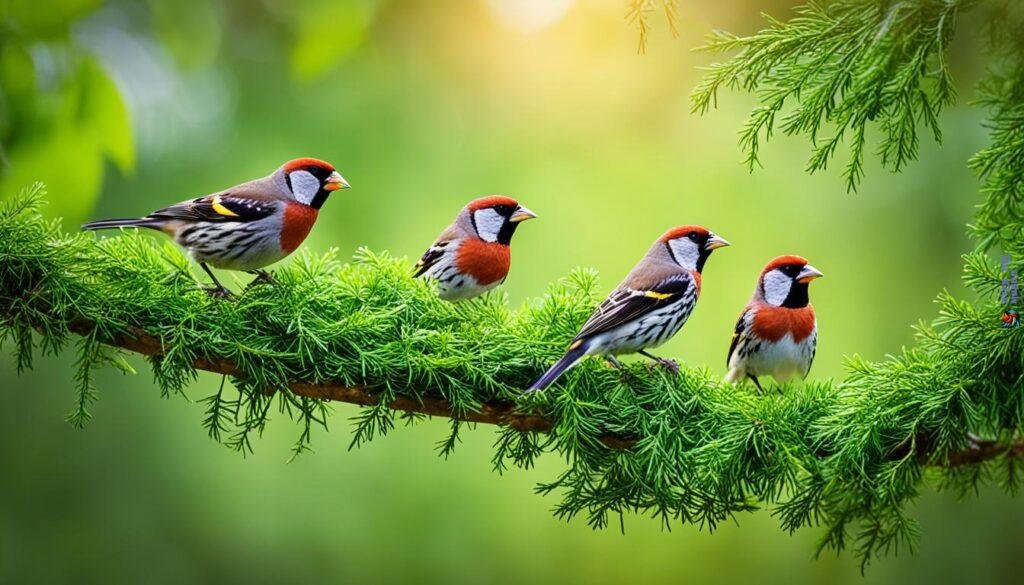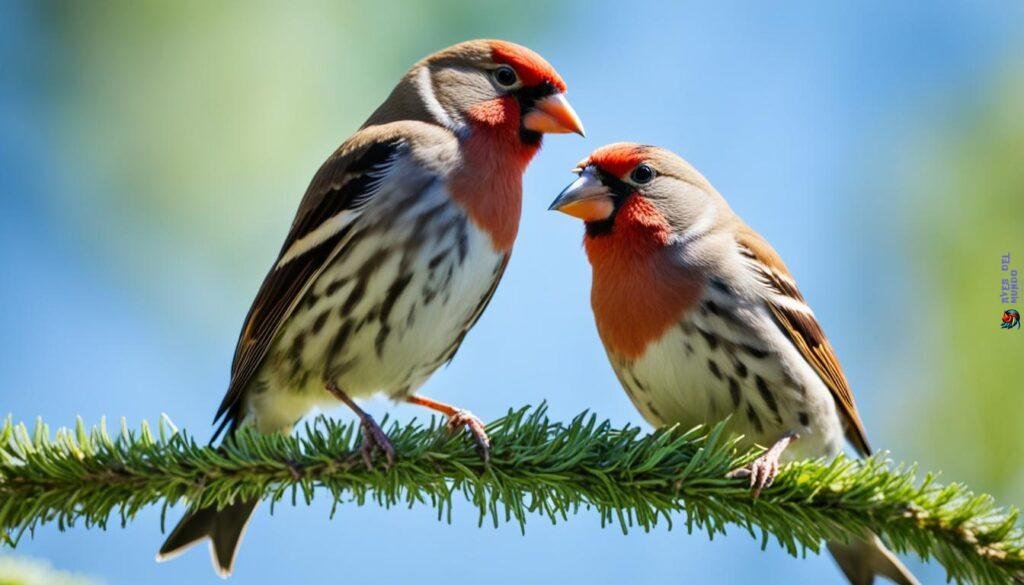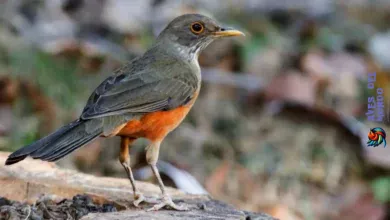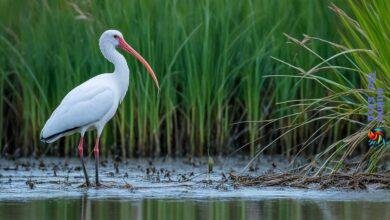Did you know that finches can live up to 10 years in captivity? These small songbirds, belonging to the family of Estrildidae finches, are not only fascinating but also make wonderful pets for bird enthusiasts. If you’re considering bringing home a finch or already have one, it’s essential to understand their care needs, species variations, and helpful tips to ensure their well-being. In this comprehensive guide, we’ll delve into the world of finches, providing you with valuable insights on their care, various species, habitat, diet, grooming, socialization, and more. Whether you’re a beginner or an experienced pet parent, this guide will equip you with the knowledge and expertise to provide the best possible care for your feathered friends.
Finch Bird Habitat
Creating a suitable habitat for your finches is essential for their overall well-being and happiness. By providing the right enclosure, setting up the habitat properly, and adding the necessary accessories, you can ensure a comfortable and safe living environment for your feathered friends.
Choosing the Right Enclosure
When selecting an enclosure for your finches, opt for a rectangular flight cage that is at least 24” L x 14” W x 18” H. This size allows your finches to move freely and exercise their wings. It is important to choose a cage with bars spaced ⅜-inch apart or smaller to prevent escape or entanglement.

Setting Up Your Habitat
Place your finch habitat in a quiet, low-traffic area of your home, away from extreme temperatures and direct sunlight. Avoid using homemade habitats or materials that may contain toxic chemicals. Provide perches of varying sizes, heights, textures, and materials to ensure your finches have options for comfortable resting and exercise. Avoid placing perches directly above the bird’s water or food bowl to keep them clean.
Create mental and physical stimulation for your finches by offering a variety of toys, such as swings, bells, and puzzles. Include a birdbath for bathing and ensure fresh, clean water and food dishes are readily available. It is important to keep the habitat well-lit with appropriate lighting and free from any toxic materials or hazards.
Habitat Mates
Finches are social birds and thrive in the company of their own species. If you plan to house multiple finches together, introduce them gradually in neutral territory and monitor their interactions for any signs of aggression or stress. Ensure that your habitat provides enough space and resources for each bird to coexist harmoniously.
Bedding
Line the bottom of the habitat with paper-based bedding, such as recycled paper pellets or shredded paper, to provide a clean and comfortable surface for your finches. Avoid using cedar or pine shavings, as they can release harmful fumes that may affect your birds’ respiratory health.
Lighting
Proper lighting is essential for your finches’ well-being. Provide a full-spectrum light source to mimic natural sunlight and promote their overall health. Ensure that the habitat has a balance of light and dark periods to mimic their natural circadian rhythm.
Décor and Accessories
Add visual interest and enrichment to your finch habitat with the right décor and accessories. Include branches, twigs, and hanging toys to encourage physical activity and mental stimulation. Offering different textures and materials, such as natural wood, ropes, and mirrors, will provide a stimulating environment for your finches.
| Essential Components | Example |
|---|---|
| Flight cage | Rectangular cage with appropriate dimensions (24” L x 14” W x 18” H) |
| Perches | Variety of perches in different sizes, heights, textures, and materials |
| Toys | Swings, bells, puzzles, and other stimulating toys |
| Birdbath | Shallow dish or basin for bathing |
| Water and food dishes | Clean, easily accessible dishes for fresh water and food |
| Lighting | Full-spectrum light source to mimic natural sunlight |
| Décor and accessories | Branches, twigs, ropes, mirrors, and other visually interesting items |
By providing the right habitat for your finches, you can create a comfortable and stimulating environment that promotes their physical and mental well-being.
Finch Bird Diet and Nutrition
Proper nutrition is essential for the health and well-being of finches. As granivorous birds, their diet primarily consists of grains. To ensure a balanced diet, it is important to provide high-quality finch food formulated specifically for their nutritional needs. Pelleted food should make up at least 60-70% of their diet.
In addition to pelleted food, fresh fruits and vegetables can be offered as a supplement to provide variety and additional nutrients. However, it is important to offer these foods in limited quantities, as they should not exceed more than 10-20% of their overall diet. Safe fruits and vegetables for finches include bell peppers, leafy greens, carrots, squash, sweet potatoes, pumpkin, and green beans.
When offering food to your finch, it is crucial to discard any uneaten food and provide fresh, clean water at all times. Avoid sharing food from your mouth or plate with your finch, as it can introduce harmful microorganisms that can be detrimental to their health.
Here is a summary of safe and nutritious foods for finches:
| Food | Description |
|---|---|
| Bell Peppers | Rich in vitamin C and antioxidants |
| Leafy Greens | Good source of vitamins and minerals |
| Carrots | Provide beta-carotene and vitamin A |
| Squash | Contains vitamins A and C |
| Sweet Potatoes | Rich in dietary fiber and vitamins |
| Pumpkin | Good source of vitamins and antioxidants |
| Green Beans | Provide vitamins and dietary fiber |
Remember, proper nutrition is essential for the overall health and well-being of your finches. Providing a balanced and varied diet will help ensure their vitality and longevity.

Finch Bird Grooming and Maintenance
Finches are clean birds and will preen themselves regularly. However, they may require assistance with grooming, especially if they have long feathers. Regularly trimming the wing feathers can prevent flight accidents and injuries. Providing a shallow dish of water for the bird to bathe in can help maintain their plumage.

Spot-cleaning the habitat daily and regularly washing and replacing the substrate, bedding, and accessories is necessary to keep the environment clean. Use pet-safe cleaning agents and ensure that the habitat is completely dry before returning the finch to its clean habitat.
Regular veterinary check-ups are important to monitor the health of the finch and address any signs of illness.
Grooming and Maintenance Checklist:
- Regularly trim wing feathers to prevent accidents
- Provide a shallow dish of water for bathing
- Spot-clean habitat daily
- Wash and replace substrate, bedding, and accessories
- Use pet-safe cleaning agents
- Ensure habitat is completely dry before returning the finch
- Schedule regular veterinary check-ups
By following these grooming and maintenance practices, you can ensure that your finch stays healthy, happy, and well-groomed.
Finch Bird Species Overview
There are several finch species that are commonly kept as pets, including the Gouldian finch, Orange weaver finch, Society finch, Spice finch, and Zebra finch. Each species has unique characteristics and care needs.
Gouldian Finch
The Gouldian finch is known for its colorful plumage, with variations of red, yellow, and green. This vibrant bird requires a specialized diet and a higher humidity level compared to other finches. Providing a nutritious diet and maintaining the appropriate humidity level in their habitat is essential for their health and overall well-being.
Zebra Finch
Zebra finches are one of the most popular types of finches kept as pets. They are known for their striking black and white striped plumage, hence their name. Zebra finches are relatively easy to care for and have a delightful song. They are social birds and do well when housed in pairs or small groups.
Society Finch
The Society finch is a hardy and adaptable finch species. They come in a variety of colors, including white, gray, and various shades of brown. Society finches are known for their pleasant song and sociable nature. They can be housed with other finch species and make great companions for both novice and experienced finch owners.
Spice Finch
The Spice finch, also known as the Nutmeg Mannikin, is a small and active finch species native to Asia. They have a characteristic brown coloration with bold markings on their wings. Spice finches are known for their playful and energetic nature, making them an entertaining addition to any aviary or finch collection.
Orange Weaver Finch
The Orange weaver finch, also referred to as the Red-billed weaver, is a captivating finch species. They have a bright orange beak and distinctive coloring, with males displaying vibrant orange plumage during the breeding season. Orange weaver finches are social birds and thrive in aviaries with plenty of space and companionship.
When considering a finch as a pet, it is important to research and understand the specific care requirements of each species. Providing the best possible care tailored to their unique needs will ensure a happy and healthy life for your finches.
Finch Bird Socialization
Finches are highly social birds and flourish when kept in pairs or small groups. If you decide to house multiple finches, it’s important to ensure compatibility and provide sufficient space for each bird. Companionship is vital for the well-being of finches, as they can become lonely or bored without proper socialization.
To promote socialization, spend quality time with your finches and engage them in interactive activities. Provide a variety of toys and enrichment options that stimulate their natural instincts. This not only prevents boredom but also strengthens the bond between you and your feathered friends.
If you’re interested in taking your finch experience to the next level, breeding finches can be a rewarding endeavor. It’s advisable to seek guidance and advice from experienced finch breeders, who can provide valuable insights into the breeding process and help you ensure the health and well-being of the finches involved.
Attracting finches to your yard can be done by creating a suitable habitat and offering appropriate food sources. Consider planting native plants that provide natural food sources and nesting sites for finches. Additionally, providing birdbaths and offering finch-friendly food, such as seeds and fruits, can help attract these delightful birds to your outdoor space.
For those looking to add finches to their family, these captivating birds may be available for purchase from pet stores, avian specialty stores, or reputable bird breeders. Take your time to research and find a reliable source that provides finches that have been well-cared for and raised in a conducive environment.



